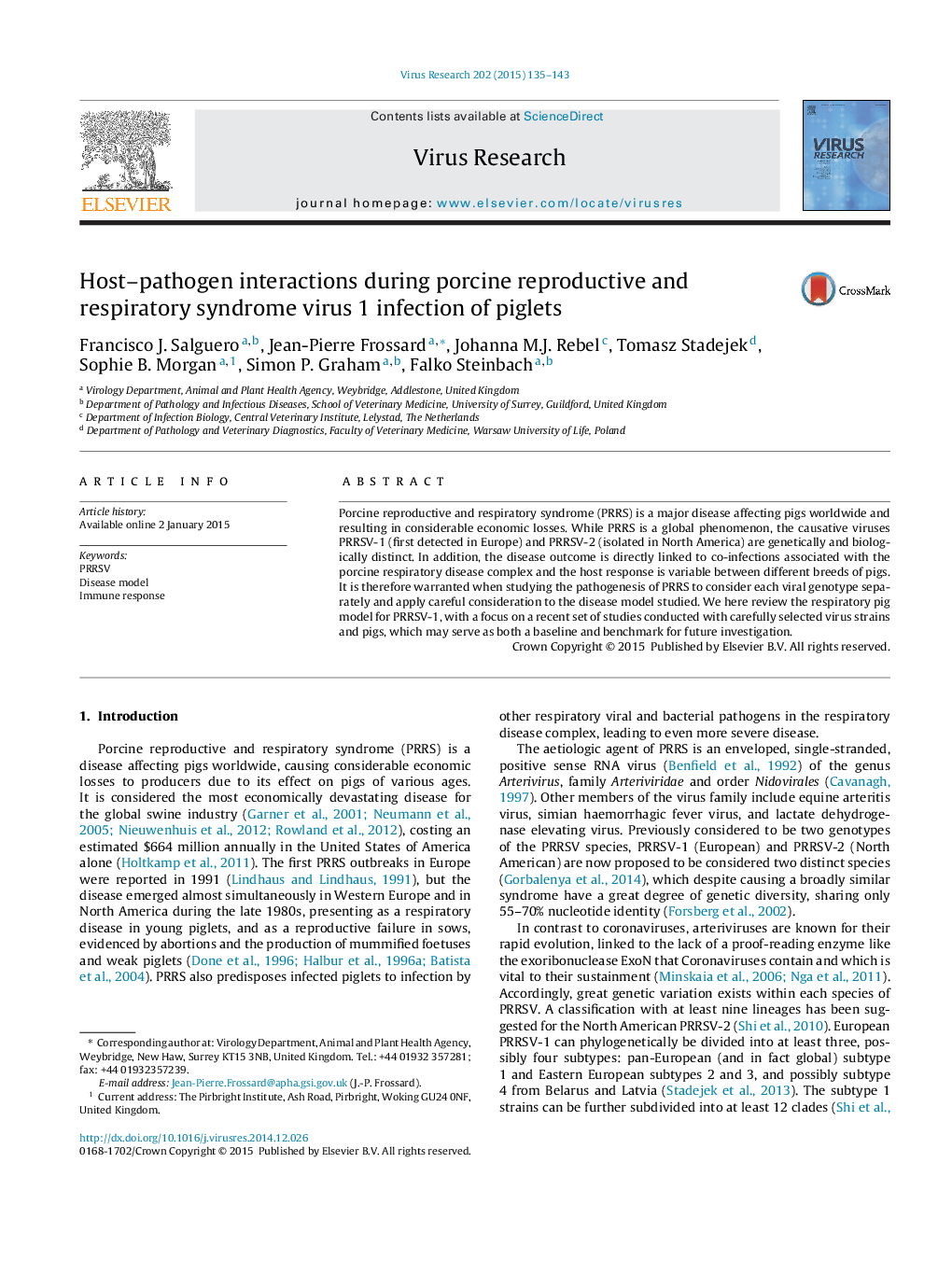| Article ID | Journal | Published Year | Pages | File Type |
|---|---|---|---|---|
| 3428219 | Virus Research | 2015 | 9 Pages |
•We review studies of host–pathogen interactions in PRRSV-1 infection of piglets.•The importance of the animal and virus genetics used in the models is highlighted.•The importance of harmonised methods for studies that are to be compared is stressed.•We point out increased virulence of PRRSV-1 subtype 3 viruses and the risk they pose.•The studies also highlight our limited understanding of the basis of PRRSV virulence.
Porcine reproductive and respiratory syndrome (PRRS) is a major disease affecting pigs worldwide and resulting in considerable economic losses. While PRRS is a global phenomenon, the causative viruses PRRSV-1 (first detected in Europe) and PRRSV-2 (isolated in North America) are genetically and biologically distinct. In addition, the disease outcome is directly linked to co-infections associated with the porcine respiratory disease complex and the host response is variable between different breeds of pigs. It is therefore warranted when studying the pathogenesis of PRRS to consider each viral genotype separately and apply careful consideration to the disease model studied. We here review the respiratory pig model for PRRSV-1, with a focus on a recent set of studies conducted with carefully selected virus strains and pigs, which may serve as both a baseline and benchmark for future investigation.
